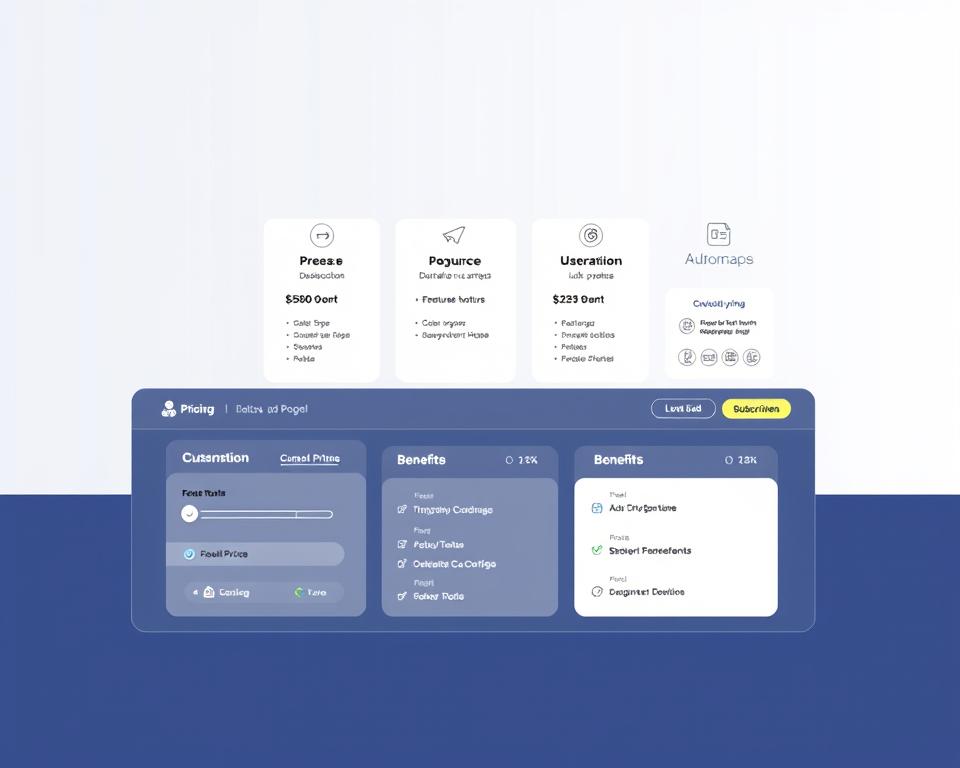
LinkedIn Learning vs. Coursera: Which Platform Offers Better Marketing Courses?
In today’s fast-paced digital world, staying ahead in your career often means investing in the right skills. But with so many options available, how do you choose the best platform for professional growth? Are you looking for industry-focused expertise or academic credibility? The answer could shape your career trajectory.
Both platforms have carved out unique spaces in the online education market. One boasts partnerships with over 250 universities, while the other focuses on practical, industry-driven content. With thousands of courses available, the decision isn’t just about quantity—it’s about quality, relevance, and long-term value.
Whether you’re aiming for a certificate to boost your resume or seeking in-depth knowledge, understanding the differences is crucial. Let’s dive into what sets these platforms apart and how they can help you achieve your goals.
Key Takeaways
- Professional education is essential for staying competitive in 2024.
- Accreditation and partnerships differ significantly between the two platforms.
- Course offerings vary, with one focusing on academic rigor and the other on industry needs.
- Global reach and user bases highlight their popularity and trustworthiness.
- Pricing, certificate value, and course structures are critical factors to consider.
Introduction to LinkedIn Learning and Coursera
In the ever-evolving landscape of online education, choosing the right platform can make all the difference. Two prominent names stand out: LinkedIn Learning and Coursera. Each offers unique features tailored to different learning needs.
Overview of LinkedIn Learning
LinkedIn Learning focuses on practical, industry-driven content. It’s designed for professionals seeking to enhance their skills quickly. The platform offers courses in business, technology, and creative fields, making it a versatile choice for career growth.
Overview of Coursera
Coursera, founded in 2012, partners with over 250 leading universities and organizations, including Yale, Stanford, and Google. It provides a wide range of programs, from short projects to full degrees. With accredited certificates from top institutions, Coursera is a go-to for those seeking academic credibility.
The platform boasts over 92 million users worldwide, reflecting its global reach. Pricing varies, with options ranging from $9.99 for individual courses to $399/year for Coursera Plus. Whether you’re looking for a one-hour project or a master’s degree, Coursera has something for everyone.
LinkedIn Learning vs. Coursera: Who Is It For?
Understanding who benefits most from each platform can help you make an informed decision. Both platforms cater to distinct audiences, from professionals seeking quick skill upgrades to students pursuing academic excellence.
Target Audience for LinkedIn Learning
This platform is ideal for professionals looking to enhance their skills quickly. It’s perfect for those in business, technology, or creative fields who want practical, industry-driven content. Whether you’re aiming for a career change or seeking to stay relevant in your current role, the courses are designed to meet real-world needs.
Target Audience for Coursera
Coursera appeals to a broader audience, including students and professionals seeking academic credibility. With partnerships with over 250 universities, it offers accredited certificates and even full degrees. Its MasterTrack certificates provide academic credit, making it a top choice for those pursuing advanced education.
Additionally, 20% of Fortune 500 companies use Coursera for employee training, highlighting its corporate appeal. Its global reach and academic rigor make it a trusted choice for learners worldwide.
Course Offerings: LinkedIn Learning vs. Coursera
Exploring the variety of course offerings can help you find the right fit for your learning goals. Both platforms provide a wide range of programs, but their focus and depth differ significantly. Whether you’re looking for practical skills or academic rigor, understanding these differences is essential.

Marketing Courses on LinkedIn Learning
LinkedIn Learning excels in offering practical, industry-driven marketing courses. With 11 course categories, learners can dive into topics like social media strategy, content marketing, and analytics. The platform’s strength lies in its focus on real-world applications, making it ideal for professionals seeking immediate skill upgrades.
Notable programs include the Meta Social Media Marketing Professional Certificate, which provides hands-on experience in managing campaigns. The courses are designed to be concise, ensuring learners can quickly apply their knowledge in the workplace.
Marketing Courses on Coursera
Coursera stands out with its university-quality programs, offering in-depth specializations and degrees. The University of Illinois’ Digital Marketing Specialization is a prime example, combining academic rigor with practical insights. Learners also benefit from unique offerings like AI-powered marketing analytics courses.
Capstone projects and real-world simulations with peer reviews add value to the learning experience. With a 90% completion rate for specialization programs, Coursera ensures learners stay engaged and achieve their goals.
| Feature | LinkedIn Learning | Coursera |
|---|---|---|
| Course Focus | Practical, industry-driven | Academic, university-quality |
| Notable Program | Meta Social Media Marketing Professional Certificate | University of Illinois’ Digital Marketing Specialization |
| Unique Offerings | Concise, skill-focused courses | AI-powered marketing analytics |
| Completion Rate | High engagement | 90% for specializations |
Course Structure and Learning Experience
The way courses are structured can significantly impact your learning experience and outcomes. Both platforms offer unique approaches, catering to different needs and preferences. Understanding these structures can help you choose the right fit for your goals.

How One Platform Structures Its Courses
This platform focuses on practical, skill-based programs. Courses are concise, often ranging from 1 to 3 hours, making them ideal for busy professionals. Each course includes video lectures, downloadable resources, and quizzes to reinforce knowledge.
Hands-on components, like guided projects using tools such as Tableau or Google Analytics, ensure learners can apply their skills immediately. The platform also offers a 14-day refund policy, providing flexibility for users to explore courses risk-free.
How the Other Platform Structures Its Courses
This platform emphasizes academic rigor and depth. Courses are part of specialization sequences, typically spanning 3 to 6 months. Weekly assignments with deadlines keep learners on track, while capstone projects provide real-world application opportunities.
Collaborative elements, such as discussion forums with over 10 million active users, foster a sense of community. The platform’s 4.7/5 average rating reflects its commitment to quality and learner satisfaction.
“The structured approach and hands-on projects made it easy to apply what I learned in my job.” – A satisfied learner
| Feature | Platform A | Platform B |
|---|---|---|
| Course Length | 1-3 hours | 3-6 months |
| Hands-On Components | Guided projects | Capstone projects |
| Collaborative Elements | Limited | Discussion forums |
| Refund Policy | 14 days | Varies by course |
Pricing and Subscription Models
When choosing an online learning platform, understanding the pricing and subscription models is crucial. Both platforms offer flexible options to suit different budgets and learning needs. Whether you’re looking for a single course or a comprehensive program, the cost and payment structures can significantly influence your decision.

LinkedIn Learning Pricing
This platform offers a subscription-based model, making it accessible for professionals seeking continuous learning. The monthly fee provides unlimited access to all courses, ensuring learners can explore multiple topics without additional cost. For those unsure about committing, a free trial period allows users to test the platform’s features.
Key pricing details include:
- Monthly subscription: $39.99
- Annual subscription: $239.88 (saving $240 compared to monthly payments)
- Free trial: 1 month
Coursera Pricing
Coursera provides a variety of pricing options to cater to different needs. Individual courses start at $9.99, while specialized programs and professional certificates range from $39 to $99 per month. For learners seeking long-term access, Coursera Plus offers unlimited courses for $399/year.
For those pursuing advanced education, degree programs can exceed $9,000. However, Coursera’s financial aid program ensures accessibility, with 85% of paid courses eligible for assistance. Additionally, the course audit option allows free access to materials without earning a certificate.
| Feature | LinkedIn Learning | Coursera |
|---|---|---|
| Subscription Cost | $39.99/month or $239.88/year | $9.99+ per course; $399/year for Coursera Plus |
| Free Trial | 1 month | Course audit option |
| Degree Programs | Not available | $9,000+ |
| Financial Aid | Not available | Available for 85% of paid courses |
Certificates and Accreditation
Earning a certificate can significantly boost your career prospects in today’s competitive job market. Certificates from reputable institutions are increasingly valued by employers, with 90% recognizing their importance in a 2023 survey. Whether you’re looking to enhance your resume or gain academic credit, understanding the value of these credentials is essential.

Certificates on One Platform
This platform offers certificates that are designed for practical, real-world applications. These credentials are verified using secure digital methods, including blockchain technology, ensuring their authenticity. While they may not carry academic credit, they are highly regarded in industries for their focus on skill-building and immediate applicability.
Certificates on the Other Platform
Certificates from this platform are often issued by top-tier institutions, adding significant academic value. Some programs even count as college credits, making them ideal for learners pursuing advanced education. The use of blockchain for verification ensures these accredited certificates are tamper-proof and widely recognized.
Key features of these certificates include:
- University-issued vs platform-branded options
- Secure digital credentials with blockchain verification
- Academic value, with some counting as college credits
- Portfolio impact, showcasing partnerships with leading institutions
Whether you’re aiming for professional growth or academic advancement, these certificates can be a powerful addition to your portfolio. Their recognition by employers and educational institutions alike makes them a worthwhile investment in your future.
User Experience and Interface
A seamless user experience can make or break your online learning journey. The interface of a platform plays a vital role in how effectively you can navigate and complete courses. Both platforms offer unique features designed to enhance your experience, but their approaches differ significantly.

Navigating One Platform
This platform focuses on simplicity and efficiency. Its learning dashboard allows users to track progress across multiple programs. With clear learning paths, you can easily identify the next steps in your educational journey. The platform also provides skill metrics, such as job readiness scores, to help you gauge your progress.
However, mobile functionality has some limitations. For example, quiz features are restricted on smaller screens. Despite this, the platform’s intuitive design ensures a smooth experience for desktop users.
Navigating the Other Platform
This platform emphasizes academic rigor and collaboration. Its interface includes tools like a peer review system, which fosters interaction among learners. Deadlines are enabled for courses, contributing to a 92% completion rate. This structured approach keeps users engaged and on track.
While the platform offers robust academic tools, its interface can feel overwhelming for beginners. The abundance of options requires some time to master, but the payoff is a highly organized and comprehensive learning environment.
| Feature | Platform A | Platform B |
|---|---|---|
| Learning Dashboard | Progress tracking across programs | Deadline-enabled courses |
| Academic Tools | Skill metrics | Peer review system |
| Mobile Functionality | Limited quiz features | Full functionality |
| User Engagement | Intuitive design | Structured approach |
Course Quality and Instructors
The quality of instructors can greatly influence your learning outcomes and overall experience. Both platforms pride themselves on offering courses taught by experts in their fields. However, the approach to instruction and the backgrounds of the instructors differ significantly.

Instructor Quality on One Platform
This platform features instructors from leading universities and top-tier corporations. Notable faculty include Andrew Ng, a Stanford professor renowned for his work in AI. The teaching methods often follow an academic lecture format, ensuring depth and rigor.
Corporate instructors, such as the Google Cloud team, bring real-world expertise to the courses. Guest lectures from industry leaders add a unique dimension, providing insights into current trends and practices.
Instructor Quality on the Other Platform
Instructors on this platform are primarily from leading universities, including Ivy League institutions. The courses are designed to offer a blend of academic theory and practical application. Some instructors are even Nobel winners, adding prestige to the programs.
The teaching methods are highly structured, with a focus on interactive learning. This approach ensures that learners not only understand the material but can also apply it effectively in their careers.
| Feature | Platform A | Platform B |
|---|---|---|
| Notable Faculty | Andrew Ng (Stanford AI) | Nobel winners |
| Teaching Methods | Academic lecture format | Interactive learning |
| Corporate Instructors | Google Cloud team | Limited |
| Unique Aspect | Guest lectures from industry leaders | Academic prestige |
Flexibility and Accessibility
Flexibility and accessibility are key factors when choosing an online learning platform. Whether you’re juggling work, family, or other commitments, the ability to learn at your own pace and access materials easily can make a significant difference. Both platforms offer unique features to cater to diverse needs, ensuring a seamless learning experience.
Learning Flexibility on One Platform
This platform emphasizes self-paced learning, allowing users to set their own schedule. With 70% of courses offering flexible deadlines, learners can progress without feeling rushed. Mobile users can download materials, though there’s a weekly limit of 100MB to manage data usage.
Accessibility is a priority, with features like screen reader compatibility ensuring inclusivity. Additionally, users can request up to three deadline adjustments, providing extra flexibility for those with unpredictable schedules.
Learning Flexibility on the Other Platform
This platform offers both self-paced and cohort-based options, catering to different learning preferences. While some courses have fixed deadlines, others allow learners to progress at their own pace. This balance ensures structure without compromising flexibility.
Accessibility features, such as screen reader support and downloadable resources, make learning convenient for all users. The platform’s commitment to inclusivity ensures that everyone can benefit from its offerings, regardless of their circumstances.
Community and Networking Opportunities
Building connections while learning can enhance your educational journey. Online platforms offer unique features to foster collaboration and networking, helping learners grow both personally and professionally.
Engaging with Peers and Mentors
One platform emphasizes peer-to-peer collaboration through study groups. These groups allow learners to share insights, solve problems together, and build lasting relationships. Paid guided projects also provide access to mentors, offering personalized feedback and industry expertise.
Another platform boasts a global network of over 10 million forum participants. These forums enable learners to discuss course material, ask questions, and connect with like-minded individuals worldwide. The sense of community is further strengthened by university-specific alumni networks and local chapter meetups.
“The forums were a game-changer for me. I connected with peers who shared my goals and challenges.” – A satisfied learner
Whether you’re looking for academic support or professional networking, these features ensure you’re never learning alone. The opportunities to engage with a diverse community make the experience richer and more rewarding.
Pros and Cons of LinkedIn Learning
Choosing the right online learning platform requires a clear understanding of its strengths and weaknesses. This platform offers practical, skill-focused courses, but it also has limitations that may affect your learning experience.
Advantages of LinkedIn Learning
One of the standout features is its focus on practical skills. Courses are designed to help professionals apply knowledge immediately in their jobs. The platform also offers certificates that are recognized in many industries, adding value to your resume.
Another advantage is the variety of topics available. From business to creative fields, learners can explore diverse subjects. The self-paced structure allows users to learn at their own speed, making it ideal for busy professionals.
Disadvantages of LinkedIn Learning
Despite its strengths, the platform has some drawbacks. One major limitation is the lack of academic recognition. Certificates do not carry university credits, which may be a concern for those seeking formal education.
Feedback on assignments is often limited, reducing opportunities for improvement. Additionally, the video production quality is basic, which may not appeal to all learners. Lastly, the absence of university partnerships means the content lacks the depth found in academic programs.
| Feature | Advantages | Disadvantages |
|---|---|---|
| Certificates | Industry-recognized | No academic credit |
| Course Content | Practical and skill-focused | Limited depth |
| Feedback | Self-paced learning | Limited assignment feedback |
| Partnerships | Wide range of topics | No university affiliations |
Pros and Cons of Coursera
Every platform has its unique strengths and limitations that can shape your learning journey. Coursera, known for its academic rigor and global reach, offers a mix of advantages and disadvantages that are worth considering before making a decision.
Advantages of Coursera
One of the standout features is its partnerships with top-tier universities. This ensures that courses are academically rigorous and recognized globally. Learners can earn accredited certificates and even pursue full degrees, making it a strong choice for those seeking formal education.
The platform also offers flexibility in learning. While some courses have fixed deadlines, others allow you to progress at your own pace. This balance caters to both structured learners and those who need more time to complete their studies.
Additionally, Coursera’s mobile app ensures accessibility. You can download materials and learn on the go, making it convenient for busy professionals. The platform’s commitment to inclusivity, with features like screen reader support, further enhances its appeal.
Disadvantages of Coursera
Despite its strengths, Coursera has some drawbacks. One major concern is the cost. Degree programs can be expensive, with some exceeding $9,000. While financial aid is available, 40% of users cite high program costs as a barrier.
Another limitation is the rigid deadlines in some courses. While they help maintain structure, they can be challenging for learners with unpredictable schedules. Additionally, the platform’s pricing tiers can be complex, making it difficult to choose the right plan.
Interaction with instructors is often limited, reducing opportunities for personalized feedback. Lastly, the steep learning curve of some courses may deter beginners, especially those new to online learning.
By weighing these pros and cons, you can determine if Coursera aligns with your learning goals and lifestyle. Its academic credibility and flexibility make it a strong contender, but the cost and rigid deadlines may require careful consideration.
Which Platform, LinkedIn Learning or Coursera, Provides More Affordable Marketing Courses That Align with Promotion Criteria?
When considering options for marketing courses, both LinkedIn Learning and Coursera offer valuable content. However, if your priority is finding affordable courses for promotion, LinkedIn Learning typically provides a subscription model that can be more budget-friendly for those seeking multiple courses in a short time frame.
Conclusion: LinkedIn Learning vs. Coursera – Which is Better for Marketing Courses?
Deciding on the right educational path depends on your career goals and learning preferences. If quick upskilling is your priority, one platform excels with its practical, industry-focused approach. For those seeking formal credentials, the other offers accredited certificates and academic depth, making it ideal for long-term value.
Budget considerations also play a role. One option is more affordable, while the other provides a higher return on investment through its partnerships with top institutions. According to 2025 user preferences, 55% lean toward the latter for its recognized credentials.
Ultimately, your choice should align with your professional needs. Whether you’re transitioning careers or enhancing existing skills, both platforms offer unique advantages. Match your decision to your goals for the best outcome.